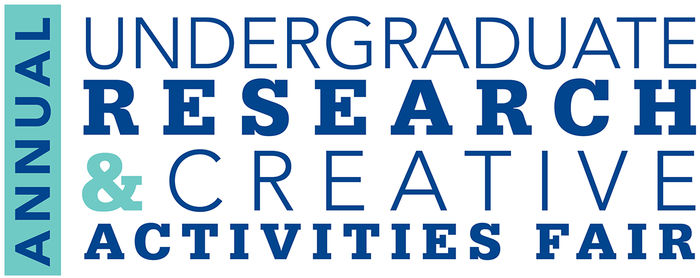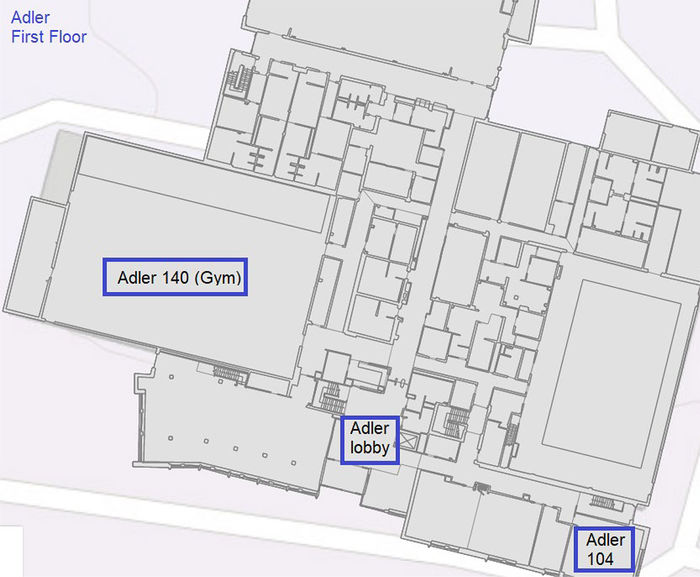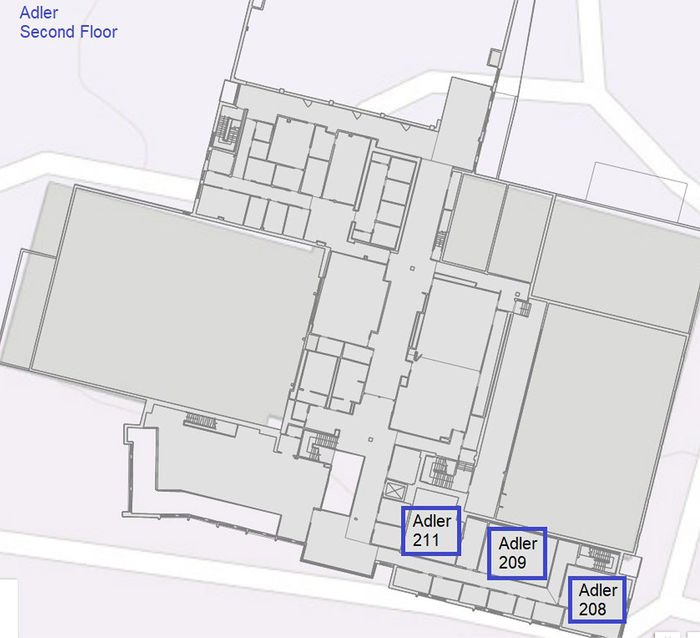Saturday, April 12, 2025
Steven A. Adler Athletic Complex
9:00 a.m.–1:00 p.m.
Penn State Altoona’s 2025 Undergraduate Research and Creative Activities Fair marks twenty-three years of student presentations of research, creative activities, and internships. Thank you for your support of our students’ hard work and dedication.
Special thanks to the student mentors, judges, Ed Levri, the URCAF committee, the Research Advisory Committee, Dorothee Hendoux-Goodman, Angel Goldian, Stephanie Wojcik, Jason Vogel and IT, John Carey and Athletics, Tom Hatch and the CAMP, Jonathan O’Harrow and Strategic Communications, the Sustainability Council, Cori Biddle and University Libraries, Sue Patterson and the Belonging Center, DEI in UR Committee, Chris Wagner and Facilities and Operations, and Megan Keener and Port-Sky Café catering. This event could not have been hosted without the support of the faculty and staff at Penn State Altoona.
The Undergraduate Research and Creative Activities Fair is sponsored by The Office of Research and Engagement. The Office of Research and Engagement supports Penn State Altoona faculty and students in their research, creative practice, out-of-classroom academic activities, and community engagement. Our students and faculty engage in a wide range of research projects and creative activities that benefit our local communities, businesses, and society at large. Our internationally recognized faculty conducts over $1 million in externally funded research every year. We support undergraduate research with over $200,000 in grants awarded directly to students working with faculty on cutting-edge projects that lead to promising careers in all fields.
Maps of the Adler Athletic Complex
Schedule of Events
| Time | Activity |
|---|---|
| 9:00 a.m. | Welcome Lobby, Adler Athletic Complex |
| 9:05–11:30 a.m. | Student Presentations See locations below |
| 11:30 a.m.–noon | Judges Convene |
| Noon–1:00 p.m. | Lunch and Awards Ceremony Auxiliary Gymnasium, Adler Athletic Complex |
Poster Presentations
Auxiliary Gym, 140 Adler Athletic Complex
Poster number in parentheses
Social Sciences I
- (1) “Effects of Red-Light Therapy on Shoulder Injury Prevention in High School Baseball Players” by Aidan Kanouff (Adviser: Irene Muir)
- (2) "Examining Predictors of Overparenting Among College Students” by Aithlyn Rennirt and Trevor Mann (Adviser: Danielle DelPriore)
- (3) “Locked and Unloaded: An Assessment of Safety Precautions Taken by American Gun Owners” by Ally Black and Madison Adamiak (Advisers: Nathan Kruis & Nicholas Rowland)
- (4) “How Do Those with Lived Experience Perceive Language Used in the Substance Use Treatment Community?” by Madison Adamiak and Dawson Coventry (Advisers: Nathan Kruis & Nicholas Rowland)
- (5) “Can College Students Differentiate Between Consensual and Non-Consensual Sexual Activity? A Vignette Study” by Makaylah Bangura, Elle Garver, Yusra Haroon, and Riley Fegley (Advisers: Nathan Kruis & Nicholas Rowland)
- (6)“The Influence of African Dance on Athletic Performance and Injury Prevention” by Anthony Louis (Adviser: Irene Muir)
Social Sciences II
- (7) “Do Non-Enforcement Interventions with Officers Improve Citizens’ Perceptions and Knowledge of Police?” by Katelyn Kurtz, Kara Harbrige, and Ray Ncube (Advisers: Nathan Kruis & Nicholas Rowland)
- (8) “Improving Police Crisis Management Training The First Assessment of The Keystone Model” by Devlin Glenn, Ally Black, Katyayani Kumar, and Abigail Hayes (Advisers: Nathan Kruis & Nicholas Rowland)
- (9) “Cross it off: Effects of directed forgetting on proactive interference” by Layna Henry, Minjoo Kim, and Lauren Thompson (Adviser: Lindsey Lilienthal)
- (10) “Break Time: Effects of Different Delays on Proactive Interference in Working Memory” by Mia Pagliarini and Simon Li (Adviser: Lindsey Lilienthal)
- (11) “Accounts Of Rail Travel” by Ashley C. Lawson and Joanthan J. Ebersole (Adviser: Amir Marvasti)
- (12) “Training Conductions on Anxiety: Aerobic versus Anaerobic” by Riley Reid (Adviser: Irene Muir)
- (13) “The effects of photo-biomodulation therapy and resistance training on quadriceps muscle growth in older adult women with severe activity-related sarcopenia” by Abigail Harwood (Adviser: Irene Muir)
Health and Life Sciences I: Internships
- (14) “Phoenix Physical Therapy Kines 495B Internship” by Leigha Anderson (Adviser: Tracey Elkin)
- (15) “Kines 495B Internship Presentation” by Sophia Nelson (Adviser: Tracey Elkin)
- (16) "Internship” by Riley Reid (Adviser: Tracey Elkin)
- (17) “Athletic Training Internship” by Abigail Harwood (Adviser: Tracey Elkin)
- (18) “Personal Training Internship” by Abigail Harwood (Adviser: Tracey Elkin)
- (19) “Kines 495C Internship Poster” by Aidan Kanouff (Adviser: Tracey Elkin)
- (20) “Internship Presentation” by Jahdon Jerome (Adviser: Irene Muir)
- (21) “Mile Level Physical Therapy” by Alyssa Fisher (Adviser: Tracey Elkin)
- (22) “Athletic Training Internship” by Cassandra Lee (Adviser: Tracey Elkin)
- (23) “Bridging Knowledge and Practice” by Hannah Brubaker (Adviser: Tracey Elkin)
Health and Life Sciences II
- (24) “Impact of Resistance Training in Overweight COPD Patients” by Sarah Hoover (Adviser: Jennifer Cacciotti)
- (25) “The Effects of the Medical Abortions Bans on Reproductive Healthcare Barriers and Miscarriage Stigma” by Arch Ackley (Adviser: Jennifer Cacciotti)
- (26) “Risk factors for the Development of Postpartum Psychosis” by Hailey Toth (Adviser: Jennifer Cacciotti)
- (27) “Decreasing Rate of Cognitive Decline in Dementia: Effects of the MIND Diet vs. the Western Diet” by Emily Greenland (Adviser: Joan Krug)
- (28) “The impact of HIIT Exercises in Glucose Control of Adults with Glucose Resistance” by Michele Imler (Adviser: Joan Krug)
Engineering and Computing
- (29) “AI-driven Compliance Assessment & Recommendations” by Jonathan Bush, Shamar Lawrence, Diego Mendez, Fred Guarino, and Mazin Rashid (Adviser: Syed Rizvi)
- (30) “Minimizing IoT Attack Surfaces: Mapping Security Controls to Known Vulnerabilities” by Mazin Rashid, Jose Iglesias-Lopez, Nicholas Brennen Shoenfelt, and Ratanathida Phiset (Adviser: Syed Rizvi)
- (31) “Design, Fabrication, and Testing of a Tennis and Pickleball Training Machine” by Casey Hess, Ivan Underwood, and Travis Meckley (Adviser: Grant Risha)
- (32) “AI-Driven Health Analytics: From Smartwatch Data to Life-Saving Alerts” by Jack Ziza (Adviser: Syed Rizvi)
- (33) “Characterization of Fuel Performance in a Lab-Scale Hybrid Rocket System” by Logan Sava (Adviser: Grant Risha)
- (34) “IoT Device Security Labeling & Dashboard” by Andrew Geisler (Adviser: Syed Rizvi)
Physical and Natural Sciences
- (35) “Pinacolborane Reduction of Amides” by Emma Freidhof and Alexis Dell (Adviser: Yimin Zhu)
- (36) “The Inclusion Complex of Monolignols and Cyclodextrins” by Alexis Dell (Adviser: Yimin Zhu)
- (37) “Exploring Environmental Heterogeneity in Deep Eutectic Solvents” by Owen Hoover, Jacob Ceglar, and Noah Ritchey (Adviser: Christopher Rumble)
- (38) “Molecular Dynamics on Deep Eutectic Solvents” by Roger Vas (Adviser: Christopher Rumble)
- (39) “Functional Wing Morphology in Odonata: Pterostigma and Flight Behavior” by Eva Gates (Adviser: Lara LaDage)
Oral Presentations: Research
209 Adler Athletic Complex
- 9:15 a.m.—“A Mixed-Method, Matched, And Weighted Assessment of PSP Use Of Force, De-Escalation, And Mental Health Awareness Community Outreach Program” Devlin Glenn, Ally Black, Katyayani Kumar, and Abigail Hayes (Advisers: Nathan Kruis & Nicholas Rowland)
- 9:30 a.m.—“The Debate on Feudalism in Japan: How Collective Memory has Shaped the Evolution of Japanese Feudal Historiography” by Jesse Pellow (Adviser: Mark McNicholas)
- 9:45 a.m.—“A Generalizable Analysis of American Gun Owners’ Firearm Training: Understanding Variations in Types of Safety Training” by Madison Adamiak and Ally Black (Advisers: Nathan Kruis & Nicholas Rowland)
- 10:00 a.m.—“Can Police-initiated Non-Enforcement Contact Interventions be used as a Tool for Improving Police-Community Relationships? Findings From a Multi-year Qualitative Study” by Katelyn Kurtz, Ray Ncube, and Kara Harbrige (Advisers: Nathan Kruis & Nicholas Rowland)
- 10:15 a.m.—“Understanding Stigma as a Treatment Barrier to SUD Communities: Learning from Stakeholders” by Dawson Coventry and Madison Adamiak (Advisers: Nathan Kruis & Nicholas Rowland)
Oral Presentations: Internships
208 Adler Athletic Complex
- 9:15 a.m.—“Kines 495B Internship: B4 Club Therapy” by Noah Ritchey (Adviser: Tracey Elkin)
- 9:30 a.m.—“Pathways to Purpose: Helping Others Find Success Through Adversity” by Jennifer Parrish (Adviser: Lauren Jacobson)
- 9:45 a.m.—“KINES 495B Internship at Phoenix Physical Therapy” by Justin Himes (Adviser: Tracey Elkin)
- 10:00 a.m.—“Once a Bridge Burns Other Routes Must Be Taken: The Way That Clients and Staff Can Appropriately Work as a Team” by Adeline Baustert (Adviser: Lauren Jacobson)
- 10:15 a.m.—“Empowering Minds & Enhancing Lives: Addressing Mental Health and Social Barriers in Older Adults” by Sara Herr (Adviser: Lauren Jacobson)
- 10:30 a.m.—“Natures edge, working with preschoolers at Hort woods” by Adaku Darlington (Adviser: Lauren Jacobson)
- 10:45 a.m.—“The Revolving Door: How consistency of family participation and the staff turnover rate impacts effectiveness of family therapy” by Anthony Urion (Adviser: Lauren Jacobson)
- 11:00 a.m.—“One Goal, Many Roles: Understanding the Collective Effort in Family Services” by Christina Nahas (Adviser: Lauren Jacobson)
- 11:15 a.m.—“Creating Spaces to Meet Unique Needs of Veterans: Supporting the Unique Needs of Veterans Across the Lifespan” by Michelle Cates (Adviser: Lauren Jacobson)
Lunch and Awards Ceremony
Auxiliary Gym, 140 Adler Athletic Complex
- Welcome
- Disciplinary Awards
- Library Awards
- Sustainability Awards
- DEIB Awards
- Excellence in Undergraduate Research and Creative Activities Mentoring Award


